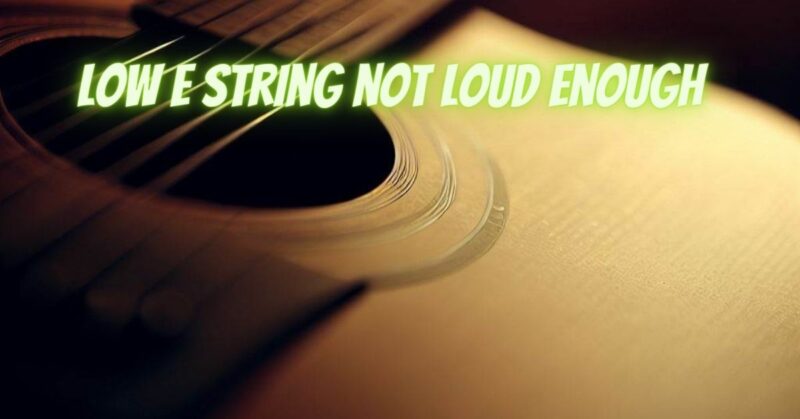The low E string on an acoustic guitar is the thickest and lowest-pitched string. It is also the most important string for providing the bass sound of the guitar. However, sometimes the low E string can be not loud enough. There are a number of reasons why this might happen, including:
- String gauge: The low E string is typically a heavier gauge than the other strings on an acoustic guitar. This means that it vibrates more slowly and produces less volume.
- String tension: The low E string is also typically under more tension than the other strings. This means that it is harder to bend and produces less volume.
- Fingerstyle technique: If you are using too much pressure when you play the low E string, it can also sound quieter than the other strings.
- Guitar setup: If your guitar is not set up properly, the low E string can sound quieter than the other strings.
Causes of a quiet low E string
The most common cause of a quiet low E string is string gauge. The low E string is typically a heavier gauge than the other strings on an acoustic guitar. This means that it vibrates more slowly and produces less volume. If you are experiencing problems with a quiet low E string, you may want to try using a lighter gauge string.
Another common cause of a quiet low E string is string tension. The low E string is also typically under more tension than the other strings. This means that it is harder to bend and produces less volume. If you are having problems with a quiet low E string, you may want to try reducing the string tension.
Fingerstyle technique can also affect the volume of the low E string. If you are using too much pressure when you play the low E string, it can also sound quieter than the other strings. Try using a lighter touch when you play the low E string and see if that helps to increase the volume.
Finally, the guitar setup can also affect the volume of the low E string. If your guitar is not set up properly, the low E string can sound quieter than the other strings. If you are having problems with a quiet low E string, you may want to take your guitar to a qualified guitar technician to have it set up.
How to fix a quiet low E string
If you are experiencing problems with a quiet low E string, there are a few things you can do to fix it:
- Use a lighter gauge string: If the low E string is too heavy, try using a lighter gauge string. This will increase the volume of the string.
- Reduce the string tension: If the low E string is too tight, try reducing the string tension. This will also increase the volume of the string.
- Use a lighter touch: If you are using too much pressure when you play the low E string, try using a lighter touch. This will increase the volume of the string.
- Have the guitar set up by a qualified technician: If you have tried all of the above and you are still having problems with a quiet low E string, you may need to take your guitar to a qualified guitar technician. They may be able to identify and fix the underlying problem.
A quiet low E string can be a frustrating problem, but it is usually easy to fix. By following the tips in this article, you should be able to get your low E string sounding its best again.
Additional tips
- If you are using a capo, try moving it down a fret or two. This can sometimes help to increase the volume of the low E string.
- If you are playing in a low register, try using a different fingerstyle technique. For example, you could try using a heavier touch or using a different finger placement.
- If you have tried all of the above and you are still having problems with a quiet low E string, you may need to take your guitar to a qualified guitar technician. They may be able to identify and fix the underlying problem.


